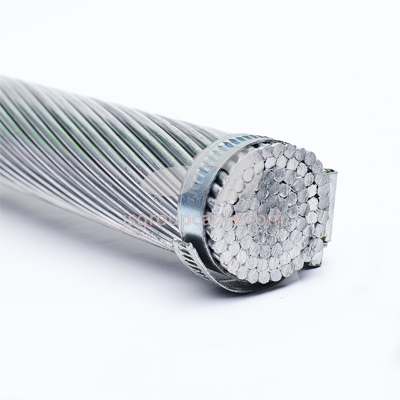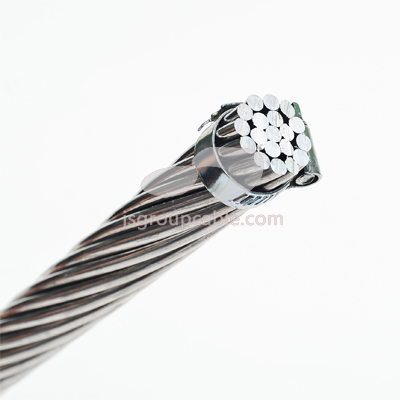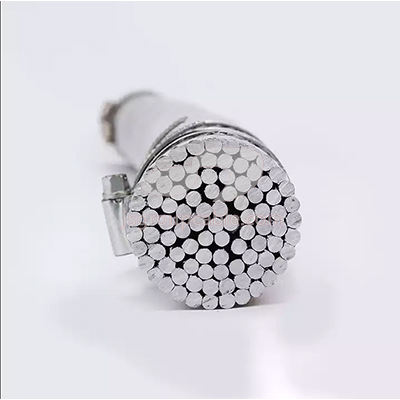- Offices Time:24 Hours Online
- Email:[email protected]
- WhatsApp:+8618339938759
AAC Conductor






AAC Conductor
AAC (All-Aluminum Conductor) is a type of electrical conductor made entirely of aluminum wires, with no steel or copper core. It is used in overhead power transmission and distribution lines due to its lightweight and high conductivity.
- Description
1.Application Of AAC Conductor
AAC (All-Aluminum Conductor) is widely used in overhead power transmission and distribution systems due to its many advantages, including its lightweight, high conductivity, and good corrosion resistance. Some common applications of AAC conductors include:
Distribution lines:
AAC conductors are frequently used in medium-voltage distribution lines to transmit electricity from substations to homes and businesses.
Transmission lines:
Although less commonly used in high-voltage transmission lines compared to other conductors like ACSR, AAC conductors are still used in some applications where high conductivity and low weight are important considerations.
Rural and remote areas:
AAC conductors are a popular choice for power transmission and distribution systems in rural and remote areas due to their lightweight and ease of installation.
Coastal areas:
The corrosion resistance of aluminum makes AAC conductors suitable for use in coastal areas where there is a risk of corrosion from saltwater and high humidity.
Urban areas:
AAC conductors are also used in urban areas where the lightweight construction allows for easier installation on poles and towers in areas where space is limited.
2.Construction Of AAC Conductor
The structure of an AAC (All-Aluminum Conductor) consists of multiple concentric layers of aluminum strands. The outermost layer comprises the largest diameter strands, and the innermost layer consists of the smallest diameter strands.
The stranding pattern of an AAC conductor is typically defined by the number and size of wires in each layer. The standard stranding patterns include seven wires in the outermost layer and either one or more wires in each subsequent layer, with the number of wires decreasing as the layers move towards the center.
The wires in each layer are helically twisted together in a direction opposite to the direction of twist of the adjacent layer. This counter-twisting helps to prevent the conductor from unraveling and provides the conductor with strength and flexibility.
The overall structure of an AAC conductor can vary depending on the application and the desired properties of the conductor. For example, some AAC conductors are designed with a central wire for added strength, while others are designed with a compact stranding pattern for increased conductivity and reduced wind resistance.
3.Standards Of AAC Conductor
All Conductor meets or exceeds the following standards: IEC61089, BS215 part1, DIN48201 part5, ASTMB231, BS EN50182, GB/T 1179-2008.
4.Parameters Of AAC Conductor
Chinese Standard GB/T 1179-2008
| Nominal Cross Section (mm²) | Structure (No./Dia.) (No./mm) | Overall Dia. (mm) | DC Resistance at20℃(Ω/km) | Caculated Breaking Load(N) | Mass (kg/km) | Rating Current (A) |
| 16 | 7/1.70 | 5.1 | 1.802 | 2840 | 43.5 | 111 |
| 25 | 7/2.15 | 6.45 | 1.127 | 4355 | 69.6 | 147 |
| 35 | 7/2.50 | 7.5 | 0.8332 | 5760 | 94.1 | 180 |
| 50 | 7/3.00 | 9 | 0.5786 | 7930 | 135.5 | 227 |
| 70 | 7/3.60 | 10.8 | 0.4018 | 10590 | 195.1 | 284 |
| 95 | 7/4.16 | 12.48 | 0.3009 | 14450 | 26.5 | 338 |
| 120 | 19/2.85 | 14.25 | 0.2373 | 16420 | 22.5 | 390 |
| 150 | 19/3.15 | 15.75 | 0.1943 | 23310 | 407.4 | 454 |
| 185 | 19/3.50 | 17.5 | 0.1574 | 28440 | 503 | 518 |
| 210 | 19/3.75 | 18.75 | 0.1371 | 32260 | 577.4 | 575 |
| 240 | 19/4.00 | 20 | 0.1205 | 36260 | 656.9 | 610 |
| 300 | 37/3.20 | 22.4 | 0.09689 | 46850 | 82.4 | 707 |
| 400 | 37/3.70 | 25.9 | 0.07247 | 61150 | 1097 | 851 |
| 500 | 37/4.16 | 29.12 | 0.05733 | 76370 | 1387 | 982 |
| 630 | 61/3.63 | 32.67 | 0.04577 | 91940 | 1744 | 1140 |
British Standard BS215-1-70
| Code Name | Nominal Area (mm²) | Stranding Wire No. and Dia. (No./mm) | Calculated Area(mm²) | Approx Overall Dia. (mm) | Approx Weight (kg/km) | Calcualted Min. Breaking Load(KN) | Calculated D C Resistance at20oC(Ω/km) |
| Midge | 22 | 7/2.06 | 23.33 | 6.18 | 63.88 | 3.99 | 1.227 |
| Gnat | 25 | 7/2.21 | 26.85 | 6.63 | 73.53 | 4.59 | 1.066 |
| Mosquito | 35 | 7/2.59 | 36.88 | 7.77 | 101 | 6.02 | 0.7762 |
| Ant | 50 | 7/3.10 | 52.83 | 9.3 | 144.7 | 8.28 | 0.5419 |
| Fly | 60 | 7/3.40 | 63.55 | 10.2 | 174 | 9.9 | 0.4505 |
| Earwing | 70 | 7/3.78 | 78.54 | 11.34 | 215.1 | 11.97 | 0.3645 |
| Wasp | 100 | 7/4.39 | 106 | 13.17 | 290.2 | 16 | 0.2702 |
| Hornet | 150 | 19/3.25 | 157.6 | 16.25 | 433.6 | 25.7 | 0.1825 |
| Chafer | 200 | 19/3.78 | 213.2 | 18.9 | 586.6 | 32.4 | 0.1349 |
| Cockroach | 250 | 19/4.22 | 265.7 | 21.1 | 731.2 | 40.4 | 0.1083 |
| Butterfly | 300 | 19/4.65 | 322.7 | 23.25 | 887.7 | 48.75 | 0.08916 |
| Drone | 350 | 37/3.78 | 327.6 | 25.06 | 1021 | 57.29 | 0.07739 |
| Centipede | 400 | 37/4.09 | 415.2 | 26.46 | 1145 | 63.1 | 0.06944 |
| Maybug | 450 | 37/4.09 | 486.2 | 28.63 | 1341 | 73.82 | 0.0593 |
| Scorpion | 500 | 37/4.27 | 529.8 | 27.89 | 1461 | 80.14 | 0.05442 |
| Cicada | 600 | 37/4.65 | 628.3 | 32.55 | 1732 | 94.91 | 0.0459 |
Product Category
Latests News
-

The 136th Canton Fair welcomes you to participate!
October 12, 2024 -

High temperature cable introduction
July 26, 2024 -

Kenya Power and Energy Exhibition 2024
June 11, 2024 -

Introduction of rubber sheathed cable
June 5, 2024

